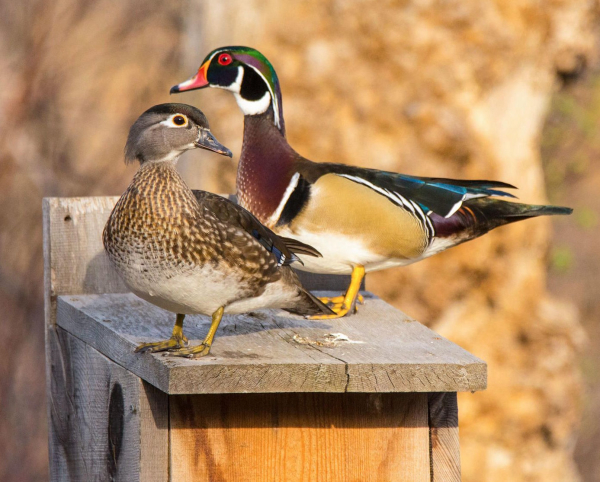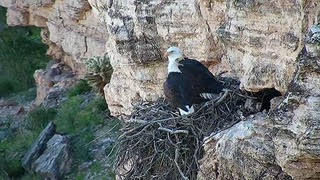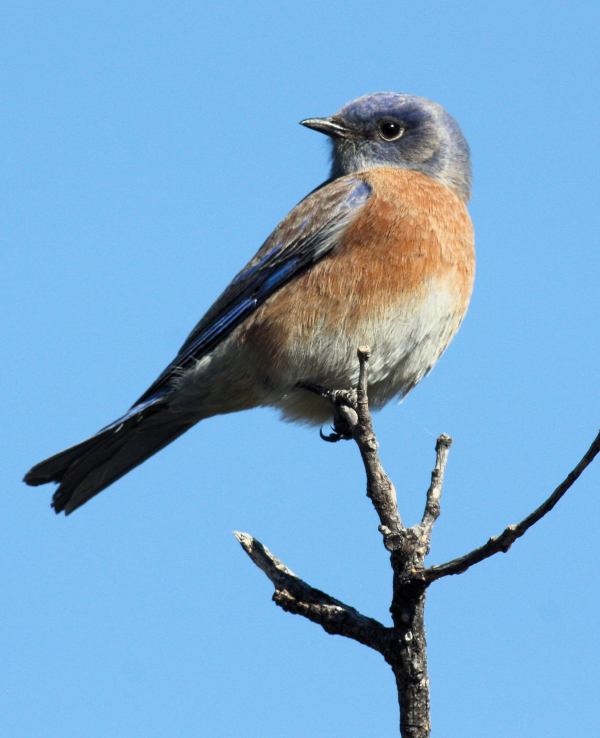Bald Eagle Numbers Soar
The bald eagle population is increasing in Florida, which continues to be one of the top spots in the lower 48 states for bald eagles to nest and raise their young.
Based on its 2011 aerial survey, the Florida Fish and Wildlife Conservation Commission (FWC) estimates there are 1,457 active bald eagle nests in Florida, nearly a 9-percent increase since 2008, when the state implemented a bald eagle management plan. Long-term success with bald eagles in Florida is reflected in the species’ recovery from just 88 active nests in 1973.
Today at the Audubon Center for Birds of Prey in Maitland, leaders from the FWC and Audubon Florida highlighted the bald eagle’s recovery and the ongoing challenge of conserving these large raptors. They said celebrating the bald eagle’s resurgence in Florida was a great way to kick off the nation’s 236th anniversary of declaring independence.
“Bald eagles have made a remarkable recovery in Florida. The FWC and Audubon are working together to protect bald eagles in Florida, so these majestic raptors will continue to soar as a symbol of national pride and conservation success,” said FWC Chairman Kenneth Wright.
For 20 years, Audubon Florida has recruited citizen-scientists to monitor eagles and their nests through its EagleWatch program, active in more than 40 counties. By monitoring more than 20 percent of the state’s nesting pairs, these volunteers make a significant difference in conserving the species.
“Audubon is proud to have played a role in the bald eagle’s amazing success story in Florida,” said Eric Draper, executive director for Audubon Florida. “Our dedicated staff and EagleWatch volunteers, along with our state agency partners, have helped to identify potential threats to these magnificent birds and their nest sites, but our work is far from done. Together, we are leading the nation in the protection of this important and iconic species.”
Working with ranchers and other landowners to protect bald eagle habitat is another priority for Audubon, with its involvement going back 50 years to the start of the Cooperative Kissimmee Eagle Sanctuary Program.
Florida’s greatest concentrations of bald eagle nesting territories are clustered around coastal and freshwater areas such as the Kissimmee Chain of Lakes. In 2011, Osceola and Polk counties ranked first and second, respectively, for highest number of documented bald eagle nests.
Floridians and visitors are encouraged to get outdoors on July 4th and throughout the year to enjoy the state’s many parks and public lands and watch bald eagles soar. You can find a Bald Eagle Nest Locator at MyFWC.com/Eagle.
Bald eagles almost disappeared from the lower 48 states by the mid-20th century, with an estimated 417 pairs in the United States in 1963. The use of the now-banned pesticide DDT was causing eggshells to weaken and break under the weight of adults incubating eggs.
Today, a healthy and stable eagle population in Florida will depend on continued availability of appropriate nesting and foraging habitats, as well as protection from disturbance during the nesting season.
While the bald eagle is no longer listed as an endangered or threatened species, it is federally protected under the Bald and Golden Eagle Protection Act and Migratory Bird Treaty Act, and by state rule (F.A.C. 68A-16.002).
It is illegal to feed, disturb, take or possess a bald eagle, its feathers, nest or eggs.
The public can help conserve bald eagles in Florida by following state guidelines for activities near eagle nests, and by reporting new eagle nest locations to BaldEagle@MyFWC.com.
The goal of the FWC bald eagle management plan, developed with public input, is to maintain a stable or increasing bald eagle population throughout Florida. The FWC provides guidelines for avoiding disturbance to nesting eagles, and a permitting framework for activities that cannot adhere to the guidelines.
Audubon’s Center for Birds of Prey contributes to eagle conservation through its specialized clinical care and EagleWatch program. The Center recently celebrated the 450th rehabilitated bald eagle released back into the wild since 1979.
For more on bald eagles, go to MyFWC.com/Eagle. For information on Audubon’s EagleWatch and Center for Birds of Prey, visit http://fl.audubon.org/audubon-center-birds-prey. For information on volunteering to monitor eagles through EagleWatch contact eaglewatch@audubon.org.





